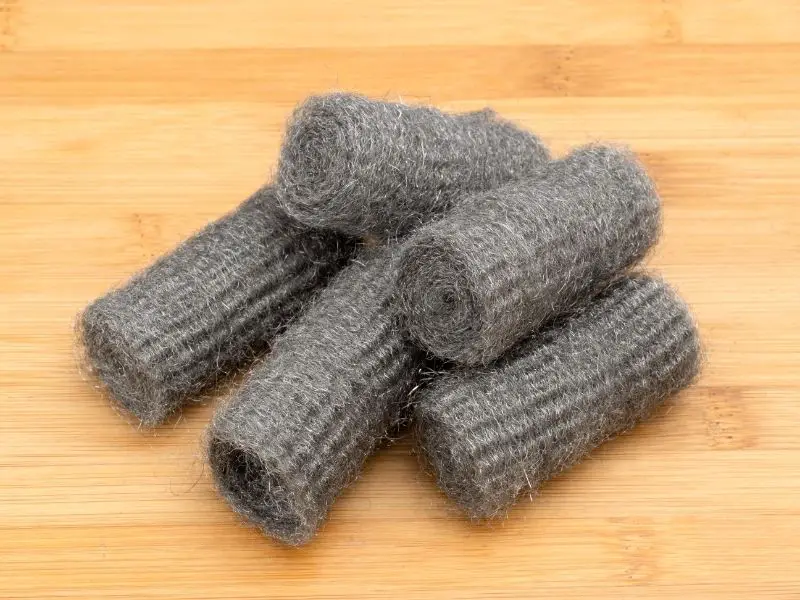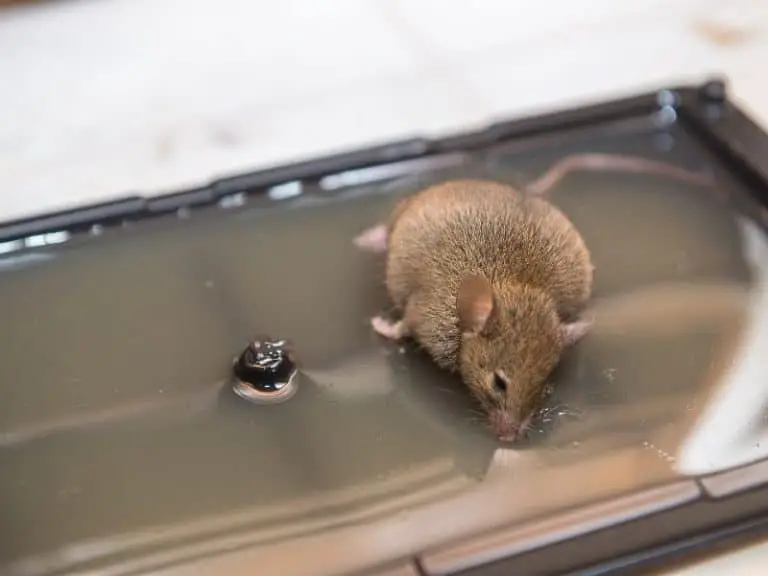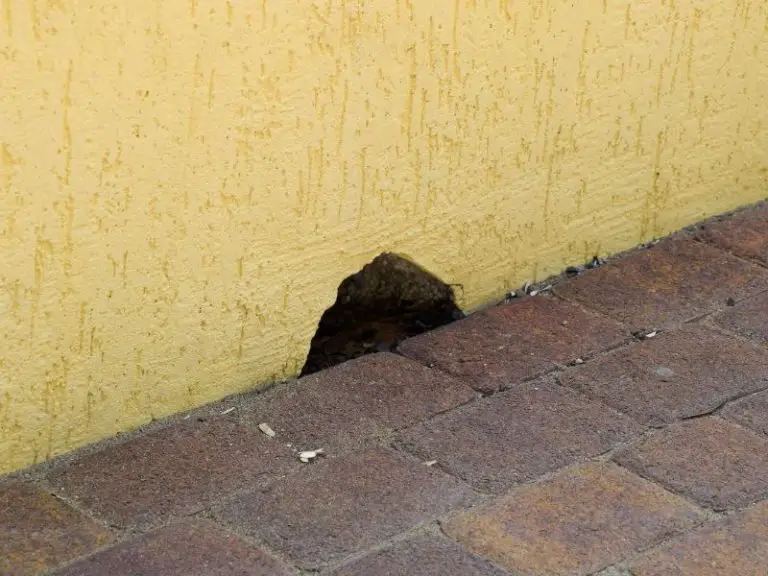Best Steel Wool for Mice
Steel wool for mice control has become more and more popular these days because many people think that rodent control products can bring risks to themselves, children, and pets.
With so many types of steel wool products on the market, it can be hard to choose the right option for your home needs. Hence, here is the best stool wool for mice.
The PestPlug DIY Kit 100% stainless steel wool is a product that comes with everything you need to plug holes and areas where mice can come in. The kit contains 4″x25’long steel wool, enough for an average house, as well as safety gloves and scissors so you use the product safely and effectively.

Aside from this, there are other brands of steel wool, which are also effective in sealing holes or gaps in the house. But before that, here are some ways how you can use steel wool for mice control.
Can Steel Wool Stop Mice?
The best and most permanent way to suppress mice from getting into your house is through exclusion or building them out, meaning you eliminate any openings through where they can enter.
It is essentially important if you mouse-proof any areas where you store, process, and use food.
Make sure that if you look holes in the walls, you also check the electrical and plumbing entrances, doors, gutters, vents, and chimneys for rodent access.
You may also seal any opening that is larger than one-quarter inch (0.6 centimeters).
Although mice cannot get through them, it is a good idea to seal holes that are smaller than this.
Mice are known for chewing their way through things, so before that small hole becomes big enough for a mouse to get through, seal it right away.
Do not use plastic sheeting, wood, rubber, or screen to close off the area because mice can gnaw right through it.
A mixture of steel wool and caulking compounds makes a good plug to seal any small openings.

You cannot use steel wool on itself because mice can pull it out or chew through it. The caulking compound makes the patch surface smooth so that mice cannot get through it.
However, some homeowners use copper mesh instead of steel for some reasons.
Because of the way it is woven, copper wool can stick to rodents’ teeth, making it difficult for them to chew or move through.
This means you’ll be able to skip the step of mixing the material with a caulking compound before stuffing it into the holes.
Also, steel wool is known to rust, copper wool does not; therefore, it means you don’t have to worry about rust stains on your brick, wood siding, or internal walls.
Do Mice Hate Steel Wool?
No study suggests steel wool can repel mice.
However, they will keep them from getting into cracks and crevices in the house. It is an easy preventive measure that anyone can implement at their home.
Simply go to your local hardware, grocery, and wholesale store and buy some steel wool. Walk around your house and look for any holes or cracks, where mice can squeeze into and stuff the openings with the steel wool.
Unlike drywall or other materials, mice have a very hard time chewing through the steel wool making it an ideal perfect filler.
Common areas that should be filled in with steel wool include unfinished basements, utility entry points such as plumbing pipes, and the perimeter of crawl spaces.
Top 6 Steel Wool For Mice
PESTPLUG 100% Steel Wool

Tired of pests and rodents coming inside your home?
PESTPLUG has the best solution for you since it has been protecting homes, buildings, RVs, and many more different structures, you can just plug away and let the rodents go away.
PESTPLUG 100% STEEL WOOL is made from 100 % stainless steel and has no plastic fibers, it also has sharp steel fibers preventing rodents and pests from chewing since it can hurt them.
It can also prevent spiders, lizards, scorpions, and many more insects from coming into your home, gardens, walls, and RVs. It is also useful for filling gaps between foundations, farm silos, metal buildings, or any holes that are as small as ¼ inch in diameter.
PESTPLUG has a DIY kit and includes gloves and scissors for easy use, it can help you save hundreds of dollars on hiring pest exterminators or using harmful chemicals just to get rid of pests, all you have to do is a plug.
Pros:
- Doesn’t rust
- Thickness is good
- Can also fit through small holes
Cons:
- A little bit short in size
Xcluder Rodent Control Fill

For preventing rodents and pests from entering your home, you can also include Xcluder Rodent Control Fill in your best options.
Xcluder fiber fills gaps, holes, and openings throughout buildings, homes, and gardens creating a barrier between unnecessary rodents and pests.
It is also effective in covering pipes, block gaps, cracks, and also weep holes so you won’t also have to worry about lizards, spiders, scorpions, and other insects.
Xcluder Rodent Control Fill is made from high-quality combined polyester and anti-corrosive materials, it is also made from weather-resistant materials, ensuring long-lasting pest prevention.
Since Xcluder is tested by USDA/APHIS, it can guarantee you saving hundreds of dollars by hiring exterminators and using harmful chemicals.
Pros:
- Soft material can easily fit into small holes
- Longer size
Cons:
- Some parts are chewed since it’s not 100% steel
LOOBANI Steel Wool

When the weather gets cold, unwanted guests such as rodents tend to find warmth through available pipes, gaps, or holes.
Another product you might want to add to your options for preventing rodents and pests from coming into your home is the LOOBANI Steel Wool.
Perfect for filling narrow spaces to avoid unnecessary hassles. It is suitable for buildings, houses, barns, and other infrastructures, it can be easily cut and fit through small holes such as block gaps, air condition vents, window gaps, attic, radiator, and gas pipes.
LOOBANI Steel Wool is made from high-quality steel and multi-fiber blend, gaining the flexibility to fit into the smallest gaps around any corner.
Due to its sharp feature, rodents cannot easily chew and enter your precious space and provide long time prevention.
LOOBANI can help you save hundreds of dollars by hiring pest exterminators or using harmful chemicals.
Pros:
- Flexible wool that can fit even into small holes, dents, and corners
- Cheap
Cons:
- Some parts can still be chewed
Oiyeefo Steel Wool for Pest and Rodent Control

Keep unwanted intruders out and away with Oiyeefo Steel Wool.
With its excellent protection properties, you won’t have to worry about pests, rodents, and even small animals coming into your home.
Oiyeefo Steel Wool is perfect for filling small holes, gaps, vents, and dents anywhere inside your home, you can also use Oiyeefo perfectly in buildings, barns, gardens, workshops, and even RVs or vehicle vents.
This superb wool is made from thousands of high-quality steel fibers which are thick, sturdy, and soft. With its sharp wool edges, rodents cannot easily chew since it might give them a painful experience.
With this premium weather-proof steel wool, you can save a lot of money from hiring pest exterminators or using harmful chemicals, all you have to do is cut and plug.
Pros:
- 100% steel
- Soft but strong
Cons:
- Some fibers slightly separate after a long use
Alabrocon Steel Wool Fill Fabric DIY Kit

This set comes in two-piece steel wool and a pair of gloves.
Alabrocon steel wool is made from thousands of high-quality metal fibers that are similar to wool, which is thick and strong and can be flexibly bent to every corner.
Besides, it can be bent to every corner. The non-corrosive material ensures durable and reliable performance wherein small creatures cannot chew through the steel fibers, but air can still pass through.
This stool wool can clog up drains, cracks in walls, ventilation holes, etc in the house and create a barrier that pests cannot get through.
The steel wool can be cut with scissors to the corresponding size according to the size of the hole to be filled and filled into the hole.
Always protect your hands by wearing the gloves provided when cutting and handling to avoid cuts. When using this, make sure to keep it away from pets and children to avoid being cut by steel wool.
Besides, it can be used for indoor and outdoor filling, which can effectively deter rodents, insects, and other pests from entering homes, offices, and other buildings.
Pros:
- Comes in complete package (gloves and scissor)
- Suitable for indoor and outdoor filling
- Can be cut into different shapes and sizes
Cons:
- Some buyers complain that the steel wool is soft and thin
Platonee Steel Wool Fill Fabric DIY Kit

This steel wool can prevent mice from entering your home. You just need to cover and block the gaps, holes, and cracks with steel wool to prevent the small animals from entering.
Because this steel wool forms a barrier, where small animals cannot chew.
They are perfectly stuffed in gaps between foundation and sill plates or framing in homes, barns, farm silos, and even metal buildings.
The holes or gaps around the brick walls, duct systems, windows, wall panels, ventilation holes, and others.
The steel wool is made from high-quality steel wire that is soft, thick, and fluffy, which will not be easily destroyed.
Steel wool pads are flexible and can be bent to every corner that can effectively fill the small holes. It contains sharp fibers, which can keep mice out while the air can still circulate.
When handling this, make sure to wear gloves and keep them away from pets and children as they may cause injury. If you are not satisfied with this product, the manufacturer offers a full refund or a replacement.
Pros:
- Made from high-quality steel wire that is soft, thick, and fluffy
- Gives value to the money since it comes in 2 packs
- It can be cut with the use of scissors to your desired size and shape
Cons:
- A little short in size
5 Ways You Can Use Steel Wool For Mice Control
Mice are intruders that no homeowner ever wants to contend with. Not only mice are unsanitary, but they are also notoriously difficult to get rid of.
If you want to keep mice and other pests from sneaking into your home. It is important to cut off their means for entrance. Check all your walls and doorways for small holes, which might be able to creep through.
Mice can find their ways through the smallest of holes, so the first thing to do is check around your home for common mouse entry points.
Any holes larger than a half-centimeter should be sealed, but there is nothing wrong if you seal smaller ones too.
It will not take too long for a small hole to be made larger since mice are excellent chewers.
Therefore, sealing these holes is vital, you can use steel wool for mice control, and here the ways on how you can use it.
Seal openings
Mice can squeeze their body through the smallest of holes.
The only way to keep them out is to seal holes up with steel wool mixed with a caulking compound. Take a walk around your home, inspect the area, and seal any tiny openings.
Surround the entry points
The open areas where pipes enter like your cupboard are the perfect places for mice to get into your home. You can seal them off with steel wool and help prevent a mice infestation.
Fill the cracks
Cracks in the foundation should be fixed too, not just to keep your house safe but to keep them from mice.
A combination of caulking compound and steel wool makes the perfect filler. While you are checking for cracks, look also for any brickwork you may have. You need to refill any gaps between bricks.
Fill door gaps
It is a challenge to stop mice from getting under your doors, especially if they are in regular use. You can use weather stripping or could wedge some steel wool underneath to prevent mice from accessing your house.
Seal off utility lines
Utility lines are inviting entry points for mice where they can get access to your house. Make sure there are no major gaps where mice can pass through. Fill the gaps with a mixture of caulking compound and steel wool.
Where Are Mice Holes Around The House
Mice can squeeze through a hole, just like the size of a nickel, where rats can squeeze through a hole the size of a half-dollar.
Prevent these rodents from entering your home by checking the inside and outside of the house for gaps and holes.
Here are the areas where you can see gaps or holes inside the house:
- Around doors
- Around the fireplace
- Around the pipes under sinks and washing machines
- Around the pipes going to water heaters and furnaces
- Around floor vents and dryer vents
- Inside the attic
- In the basement or crawl space
- In the basement and laundry room floor drains
- Between the floor and wall juncture
- Inside, under, and behind the kitchen cabinets, stoves, and refrigerators
- Inside the closets near the floor corners
Meanwhile, here are the areas where you can look for gaps and holes outside the house
- In the roof among the rafters, eaves, and gables
- Around windows
- Around the doors
- Around the foundation
- Under roofs
- Around the holes for electrical plumbing, cables, and gas lines
- Attic vents and crawl space vents
How To Use Steel Wool In Filling Holes?
Fill the small holes with steel wool. Then put caulk around the steel wool to keep it in place. Use lath screen or lath metal cement, hardware cloth, or metal sheeting to fix large holes.
These materials can be found at your local hardware store.
Fix the gaps in the trailer skirtings and use flashing around the base of the house. If you do not remember to seal up entry holes in the home, rodents will continue to get inside.
Outbuildings and garages should be prevented at the entrance of rodents.
Final Thoughts
The use of steel wool is an excellent idea.
Though there are many different mouse control measures you can take to stop mice from getting into your home. Some may work effectively such as steel wool and caulking compounds.
To make this more effective, I suggest setting up some mouse traps around the perimeter of your home to catch any mice that dare to linger near it.
As you set them up, I suggest that you use pet-friendly mouse traps.
Photo credit: ©canva.com
Medical Disclaimer: TheHomePestControl is a digital publisher and does not offer personal health or medical advice. The contents of this website are not intended to substitute for professional medical advice, diagnosis, or treatment.
Affiliate Disclaimer: As an Amazon Associate, I earn from qualifying purchases made on our website. If you make a purchase through links from this website, I may earn a commission at no additional cost to you.






